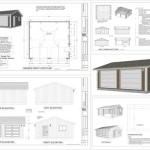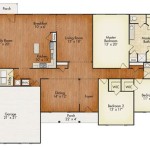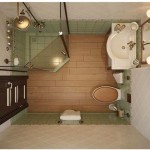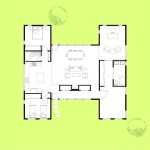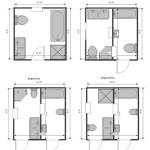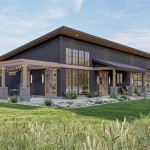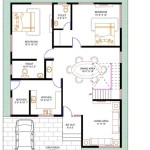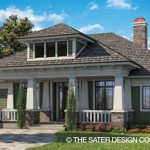Multi-Family Home Plans and Designs: A Comprehensive Overview
Multi-family home plans and designs cater to the growing need for diverse housing options, offering solutions for increased density, affordability, and various lifestyle preferences. These designs encompass a wide range of structures, from duplexes and townhouses to apartment buildings and mixed-use developments. Understanding the principles behind multi-family design is crucial for developers, architects, and potential homeowners looking to invest in or build these types of properties.
The planning and design of multi-family homes involve careful consideration of several factors, including site analysis, zoning regulations, building codes, accessibility requirements, and sustainability goals. Efficiency in land use, optimization of living spaces, and harmonious integration with the surrounding environment are paramount. Furthermore, the specific needs and preferences of potential tenants or owners play a significant role in shaping the final design.
Key Considerations in Multi-Family Home Design
Several pivotal elements must be meticulously addressed during the design phase to ensure a successful multi-family project. These elements impact functionality, aesthetics, and ultimately, the marketability and long-term value of the property.
Space Efficiency and Layout Optimization
Maximizing usable space while minimizing wasted areas is a prime objective in multi-family design. Efficient layouts are critical for creating comfortable and functional living environments within potentially limited square footage. This involves strategic placement of rooms, minimizing hallways, and incorporating multi-purpose spaces. Open-concept designs, which combine living, dining, and kitchen areas, are frequently employed to create a sense of spaciousness. Smart storage solutions, such as built-in shelving and under-staircase storage, also contribute to efficient space utilization.
The arrangement of individual units within the building is equally important. Considerations include minimizing noise transmission between units and providing adequate privacy for each resident. Strategic placement of bathrooms and closets can serve as sound buffers. Orienting units to maximize natural light and ventilation contributes to a more pleasant living environment. The layout must also comply with accessibility standards, ensuring that units are usable by individuals with disabilities.
In designing common areas, such as hallways, stairwells, and lobbies, accessibility, safety, and aesthetics are paramount. Wide hallways and ramps accommodate wheelchairs and strollers. Adequate lighting and clear signage enhance safety and navigation. Thoughtful design elements, such as artwork or decorative lighting, can create a welcoming and aesthetically pleasing atmosphere.
Privacy and Noise Reduction
Maintaining privacy and minimizing noise transmission are essential for creating a comfortable living environment in multi-family homes. Effective soundproofing measures are crucial to prevent noise from traveling between units, from common areas, and from exterior sources. This can be achieved through a variety of strategies, including the use of sound-dampening materials in walls, floors, and ceilings. Insulating walls and floors with materials like mineral wool or fiberglass batt can significantly reduce sound transmission.
The design of the building envelope also plays a critical role in noise reduction. Properly sealed windows and doors can minimize noise intrusion from outside. Strategically placing windows and balconies away from noisy areas, such as streets or parking lots, can further mitigate noise pollution. Landscaping, such as planting trees and shrubs, can also help to absorb sound and create a more peaceful environment.
Beyond physical soundproofing, layout considerations can also contribute to privacy and noise reduction. Arranging units so that bedrooms are not directly adjacent to living rooms or kitchens can minimize noise disturbance. Incorporating buffer zones, such as closets or bathrooms, between units can also help to dampen sound transmission.
Exterior Design and Aesthetics
The exterior design of a multi-family home significantly impacts its curb appeal and its integration with the surrounding neighborhood. The architectural style should be appropriate for the context and should complement the character of the existing buildings. Considerations include the building's massing, proportion, materials, and detailing. Careful attention to these elements can create a visually appealing and harmonious design.
The choice of exterior materials is crucial for both aesthetics and durability. Materials should be weather-resistant, low-maintenance, and aesthetically pleasing. Common choices include brick, siding, stucco, and stone. The selection of materials should also consider the local climate and the potential for weathering and degradation. Combining different materials can add visual interest and create a more dynamic facade.
Landscaping plays an integral role in enhancing the exterior aesthetics of a multi-family home. Well-designed landscaping can create a welcoming entrance, soften the building's edges, and provide shade and visual interest. Considerations include the selection of plants, the arrangement of planting beds, and the provision of outdoor seating areas. Integrating green spaces into the design can also enhance the environmental sustainability of the building.
Types of Multi-Family Home Designs
Multi-family housing encompasses a diverse range of architectural styles and configurations, each offering distinct advantages and catering to specific needs and demographics.
Apartment Buildings
Apartment buildings are the most common type of multi-family housing, characterized by multiple rental units within a single structure. These buildings can range in size from small, low-rise structures to large, high-rise complexes. Apartment building designs typically prioritize efficiency, affordability, and convenience. Common amenities may include on-site laundry facilities, parking, and recreational areas.
The layout of apartment buildings is typically organized around a central corridor or stairwell, providing access to individual units. Unit sizes and configurations vary depending on the target market. Studios, one-bedroom, and two-bedroom apartments are common options. The design of apartment buildings should prioritize privacy, noise reduction, and access to natural light and ventilation.
Recent trends in apartment building design include the incorporation of sustainable features, such as energy-efficient appliances, green roofs, and rainwater harvesting systems. The integration of smart home technology, such as smart thermostats and keyless entry systems, is also becoming increasingly popular.
Townhouses
Townhouses are multi-family dwellings that share common walls and often have individual entrances and private outdoor spaces. They typically consist of two or three stories, providing a more house-like feel than apartments. Townhouse designs offer a balance between affordability and privacy, making them a popular choice for families and young professionals.
The layout of townhouses typically features a living area, kitchen, and dining area on the ground floor, with bedrooms and bathrooms on the upper floors. Each unit typically has its own private entrance, often with a small porch or patio. Townhouse developments often include shared amenities, such as parks, playgrounds, and community centers.
Townhouse designs can vary widely in style, ranging from traditional to contemporary. Common architectural styles include colonial, Victorian, and modern. Attention to detail in the exterior design is important for creating a cohesive and visually appealing streetscape.
Duplex and Triplex Homes
Duplexes and triplexes consist of two or three dwelling units within a single building. These types of multi-family homes are often found in residential neighborhoods and offer a more intimate living experience than larger apartment buildings. Duplexes and triplexes can be an attractive option for homeowners who want to live in one unit and rent out the others.
The layout of duplexes and triplexes typically features separate entrances for each unit, providing a sense of privacy. Units may be arranged side-by-side or stacked on top of each other. The design should prioritize noise reduction between units and provide adequate parking for each resident.
Duplex and triplex designs can vary widely in style, depending on the local architectural context. Common styles include Craftsman, bungalow, and ranch. The exterior design should be consistent with the surrounding neighborhood and should enhance the overall aesthetic appeal of the property.
Factors Influencing Multi-Family Design Choices
The selection of a particular multi-family home plan and design is influenced by a complex interplay of factors, each contributing to the overall feasibility and success of the project.
Zoning Regulations and Building Codes
Zoning regulations and building codes play a significant role in shaping multi-family home designs. Zoning regulations dictate the type of land use permitted in a particular area, including the density of housing units. Building codes establish minimum standards for safety, accessibility, and energy efficiency. Developers and architects must comply with these regulations to obtain the necessary permits and approvals for their projects.
Zoning regulations may specify requirements for building height, setbacks, parking, landscaping, and other factors. Building codes may address structural integrity, fire safety, plumbing, electrical systems, and mechanical systems. It is essential to consult with local authorities to understand the specific requirements that apply to a particular project.
Recent trends in zoning regulations include the promotion of mixed-use development, which combines residential, commercial, and recreational uses in a single area. This approach can create more vibrant and walkable communities. Building codes are also increasingly focused on energy efficiency and sustainability, encouraging the use of green building practices.
Budget Constraints
Budget constraints are a primary consideration in multi-family home design. The cost of materials, labor, and land can significantly impact the overall project budget. It is important to carefully balance design aspirations with cost-effective solutions. Value engineering, which involves identifying opportunities to reduce costs without compromising quality or functionality, is a crucial aspect of the design process.
Material selection is a major factor in determining construction costs. Choosing durable, low-maintenance materials can reduce long-term maintenance expenses. Utilizing standard building components and minimizing custom design elements can also help to control costs. Efficient floor plans and compact building footprints can reduce the overall square footage and minimize construction expenses.
Sustainable design strategies can also contribute to cost savings over the long term. Energy-efficient appliances, solar panels, and rainwater harvesting systems can reduce utility bills and lower the overall cost of ownership.
Target Market Demographics
Understanding the target market demographics is essential for creating multi-family homes that meet the needs and preferences of potential residents. Factors such as age, income, lifestyle, and family size can influence design choices. For example, apartments targeting young professionals may prioritize amenities such as co-working spaces and fitness centers, while apartments targeting families may focus on larger units and access to schools and parks.
Market research can provide valuable insights into the preferences and needs of the target demographic. This research may include surveys, focus groups, and analysis of demographic data. Understanding the local rental market and the demand for different types of housing can help inform design decisions.
The design of multi-family homes should also consider accessibility and inclusivity. Providing accessible units and common areas ensures that the building is usable by individuals with disabilities. Incorporating features that cater to diverse cultural backgrounds can also enhance the appeal of the property to a wider range of residents.

Multi Family House Plan Not A Fan Of The Dated Exterior But I Like Concept Plans Duplex

Plan 69111am Hillside Multi Family Home In 2024 House Plans Homes

6 Unit Modern Multi Family Home Plan 21603dr Architectural Designs House Plans

Builder Preferred 5 Plex Modern Style House Plan 9086

Multi Family Plan 6865

Multi Family Plan 73483 Ranch Style With 3433 Sq Ft 5 Bed 3 B

Fordyce Crest Multi Family Home House Plans Duplex Floor And More

Plan 75731 Modern Style With 3 Bed Bath 1 Car Garage

Multi Family Plan 64952 Victorian Style With 7624 Sq Ft 16 Bed

Multi Family House Plan Camden Plans Duplex Design

